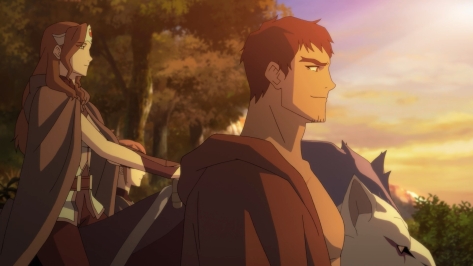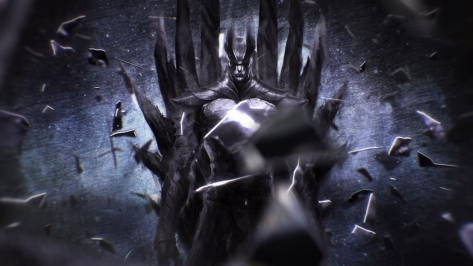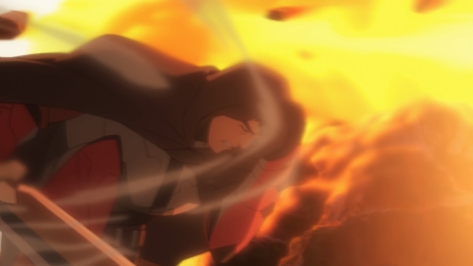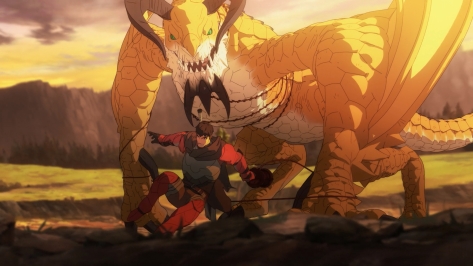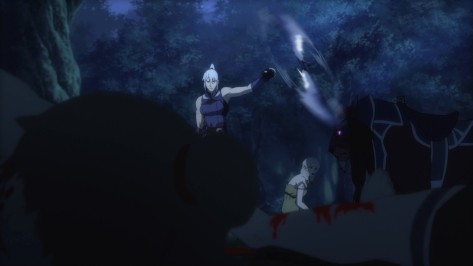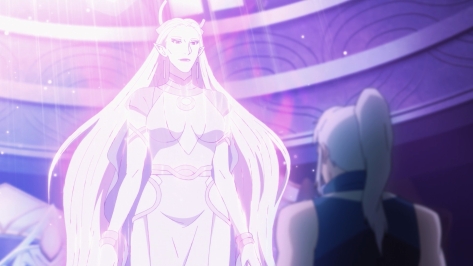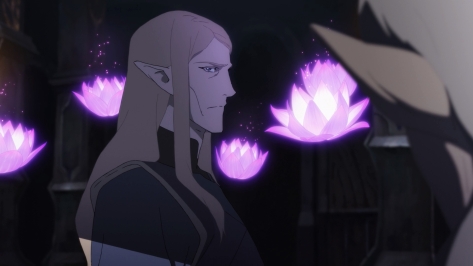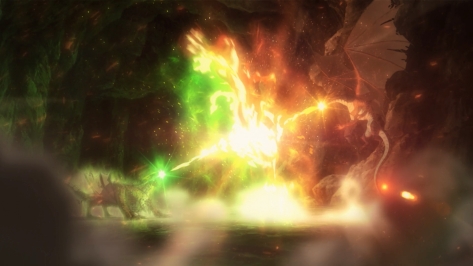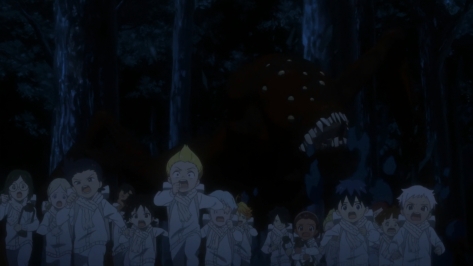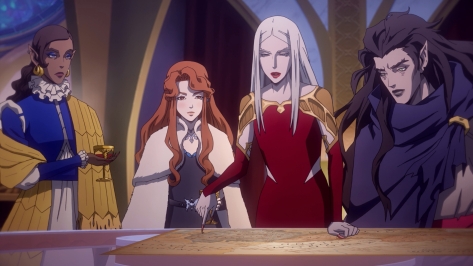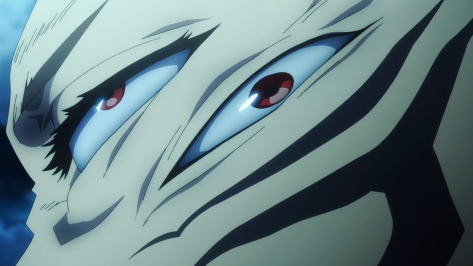Similar: Castlevania
Watched in: English
Length: 8 episodes
Positives:
- Quality production
- Love the variety of accents
- The elven goddess is a creepy and effective antagonist
Negatives:
- Feels like it’s missing lore context if you aren’t familiar with the source
(Request an anime for review here.)
Full disclosure, I know nothing about Dota 2 lore. This review comes from the perspective of someone who doesn’t play the game or read any related lore. I did play the original DotA mod a decent amount and watched a few tournaments, but to be honest, I didn’t know there was any lore to the game. A one paragraph profile per character, sure, though nothing more. As such, if you are a loremaster, your experience may vary.
For those even less familiar with the material than me, Dota 2 is the standalone sequel to the original DotA mod from Warcraft 3. The mod proved more popular than Warcraft 3 itself until game studio Valve hired key developers to make a complete game, independent of Warcraft and Blizzard. The worst business move Blizzard ever made was not capitalising on DotA and they’ve since shot themselves in the foot with their StarCraft 2 and abysmal Warcraft 3 Reforged modding policy. Valve just had to change a few character and item names to avoid direct reference to trademarks, though references are still in place – the burst fire mage Lina the Slayer, based on Lina Inverse from Slayers, is still in the game, for example. Dota 2 has gone on to reach massive heights with the largest prize pools in esports history with its world championships each year, The International.
Dota: Dragon’s Blood brings together a handful of characters from Dota 2’s large cast of “Heroes” for an adult fantasy adventure. The protagonist is Davion the Dragon Knight, who slays dragons for a living only to have the soul of an elder dragon merge with his body during a fight with a demon. He can now transform against his will into a human-dragon hybrid monster (think the Hulk). He soon joins forces with Mirana, “princess of nothing,” to stop this demon from claiming more dragon souls. Meanwhile, the elven mage Invoker plots against the elven goddess Selemene, whose sycophantic followers wreak genocide across elven lands.
The best thing I can say immediately about Dragon’s Blood – or any game to film tie-in – is its disregard for the source material’s gameplay. Unless it’s something like Wreck it Ralph where the game is the point of the story, trying to incorporate gameplay elements in a film/series is cringe inducing (see Uwe Boll films for reference). It finally feels like Hollywood is starting to grasp how to adapt games for screen. Then again, Sony’s upcoming offerings don’t look promising, so perhaps it’s only in the animation sector.
Speaking of animation, Studio Mir (The Legend of Korra) once again makes the art form a delight to behold. The action scenes are fluid and violent, even on the horror side at times. This isn’t a series for kids. The character designs are classic high fantasy and coming from a game that requires distinct silhouettes for visibility in combat, there is variety. On a world building level, again, classic fantasy except for the elves, who are far less noble than the stereotype. Love that most of them are Australian and the actors do a good job for non-natives. It matches their society better than the typical Oxford English. The world grabs me.
However, the characters are a little lacking and this is where I wonder if my unfamiliarity with the source has an effect. I have not looked into the lore since finishing the series either – want to keep my outsider’s perspective. After all, you shouldn’t need outside material to enjoy a good adaptation. Had I been well acquainted with Davion and Mirana beforehand, would they engage me? I’m not even certain if all notable characters in Dragon’s Blood are from the game. I assume so.
Mirana is supposed to be a princess of “nothing” and yet, I don’t have the impression of a princess nor do I feel the shadow of secrets from her backstory. She’s fine though not compelling. The same is true of Davion. His personality does make him entertaining – I’ll give him that.
The more interesting characters are the antagonists Selemene and the not-as-antagonistic Invoker. Selemene is the Goddess of the Moon but more akin to a goddess of lust and obsession, as she forces her followers to pledge undying love to her. She’s psychotic about this. You want a favour from her? You had better be ready to say you love her or off with your head. It sounds mundane on paper yet she is genuinely threatening. She has a much stronger presence than the main villain consuming dragon souls (I often forgot he was in the story). Against her we have Invoker, who is a sympathetic antagonist with a personal story that drives engagement. I want more of the elven subplot over the main plot.
In all, Dota: Dragon’s Blood is certainly good enough for a relative outsider to the franchise, like myself, to find reason to watch this anime. I am looking forward to the next season and that’s worth something. Riot Games has an animated series of its own on the way for their game League of Legends, which I am much more familiar with, so it will be interesting to see how that compares.
Overall Quality – Medium
Recommendation: Try it. Even the Dota illiterate can enjoy this fantasy series.
(Request reviews here. Find out more about the rating system here.)
Awards: (hover over each award to see descriptions; click award for more recipients)
Positive:
Negative: None

